This past week, Opal provided me with a the opportunity to show you how I go about diagnosing and treating a health issue in an older hen. On Thursday, after Steve closed up the hens for the night, he told me that Opal was making an odd noise. I went out to see.
AWWWK! …several seconds of silence…. AWWWK!… repeat….
This was a hen in some sort of distress. Her eyes were clear and there was no sound of gurgling breathing, so I didn’t think that it was a respiratory problem. The hens were getting onto their roosts. Everyone was ignoring Opal. I decided to wait until the morning and see what developed.
In the morning, all was quiet and Opal looked and sounded okay. But, that afternoon, Opal was in a nesting box and her head was splattered with blood. Chickens know when a hen isn’t well, and they’ll often take advantage of the situation, pecking to keep the hen away from resources like food or a favored nesting box.
Opal needed to be cleaned up, checked over and observed for awhile. Most people’s first inclination, when faced with a possibly sick hen, is to bring her inside and baby her. This is not usually a good idea. First of all, chickens shed dirt and dander, and their manure breaks down into ammonia fumes. This is not something that you want in your house. Secondly, chickens have small and not particularly robust lungs. Fresh air is best for them. Thirdly, removing a chicken from the group is stressful for her, and if kept away for more than a day, you’ll have difficulty reintegrating the hen back into the flock. However, it was 10° F outside. I brought her into the house.
I looked Opal over, with her breeding and history in mind. She is a Delaware, which is a breed developed in the 1940s for meat, so she’s a big bird, and not one that was ever meant to live past her first year. Delawares are good layers, though, and gentle hens, and so are a nice addition to a backyard flock. Opal is turning four, which is well past her prime. She has had laying issues – she has infectious bronchitis, which causes thin-shelled, wrinkly eggs. This winter I’ve noticed that her bottom is dirtier than usual – in these cold temperatures diarrhea freezes on the hen before she can tidy herself up. Something was amiss. But, since she was eating and behaving normally, I’d let her be.
Now, with her odd vocalizations and the blood on her head, it was time for an epsom salt soak, which I call the Spa Treatment.
It took a bit to figure out where the blood was coming from. I gently cleaned it off with a warm, wet wash cloth.
Someone must have grabbed her comb and yanked, as the base of it had detached from her head. It was already healing back in place. Chickens have a remarkable ability to recover from wounds.
Opal’s bottom needed a soaking and rinsing. As with most hens who have had a runny discharge for awhile, the area was bare of feathers. However, it was otherwise fine with smooth pink skin and no signs of external parasites.
Her vent (that’s the opening that both the egg and the manure comes out of) was soft and wide, indications that she is in lay. But, I haven’t collected any eggs from her this season, which is cause for concern. Is she an internal layer? (That is when eggs, not yet fully formed, slip out of the reproductive tract and accumulate in the body cavity.) Her vent was pulsing – a sure sign of internal distress. I don’t jump to the conclusion that there is a stuck egg because I haven’t found egg binding to be prevalent. I’ve done 21 necropsies and have only found one true case. Rather, these symptoms of straining and diarrhea, when they progress to death, are more often caused by cancer or internal laying. There’s no way of knowing which disease she has until the bird dies and a necropsy is done. But, honestly, it doesn’t matter to the hen or to the caregiver – there’s no cure.
However, and this is the big however, sometimes a hen shows distress and if you can move things along inside of her, and right any metabolic imbalances, then the hen can recover. The first thing to do is that
Auto Amazon Links: No products found.
There are signs for optimism again. Opal wasn’t in a hunched, miserable-looking penguin stance. She’s remained upright.
After her bath, I blow dried her and put her into a dog crate in the mudroom in order to observe how much she ate and drank, and what came out her vent.
She had no lack of appetite, a very good sign. No lethargy. The crucial tell would be what she passed.
That wasn’t so good. Diarrhea.
On the plus side, it wasn’t green or yellow (indications of severe ailments without a cure.) Over the course of 8 hours, she did a normal poo.
But then it went back to the diarrhea.
At this point I evaluated the situation. Something was wrong inside of Opal – ongoing diarrhea pointed to that. However, she was no longer squawking in distress. She was eating and drinking and walking normally. Her comb was healing and there was no obvious bloody spot for the hens to attack. It was time to put Opal back in with her flock.
Two days later, her bottom remains free of manure. The Gems are leaving her comb alone.
Opal would like to lay an egg.
Honestly, I’m not optimistic about her long-term chances. She has issues. At this point, though, a little TLC gets her through. It’s important that any treatment is brief and gets her right back in with the flock. If Opal stops eating and strutting around and interacting with the flock, then I’ll know that her time is up. For now, though, she’s a big hen with a very clean and fluffy white bottom.
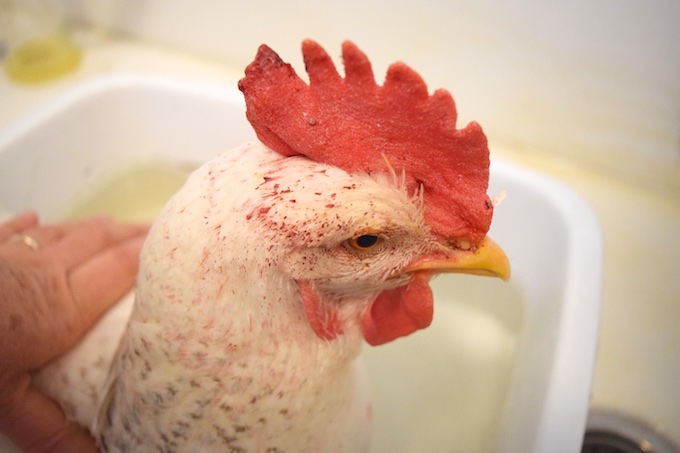
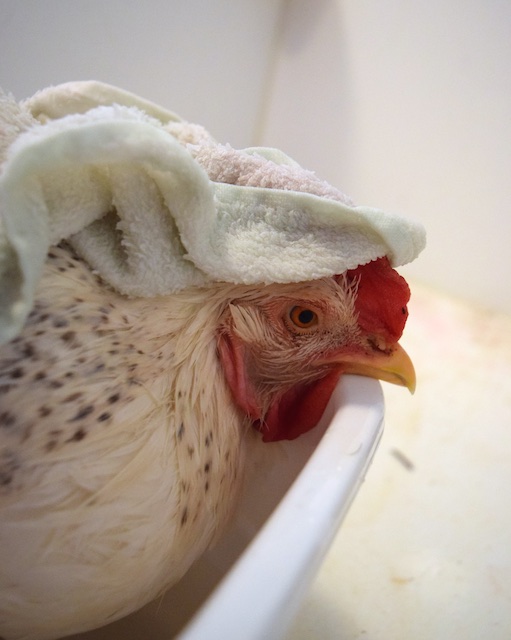
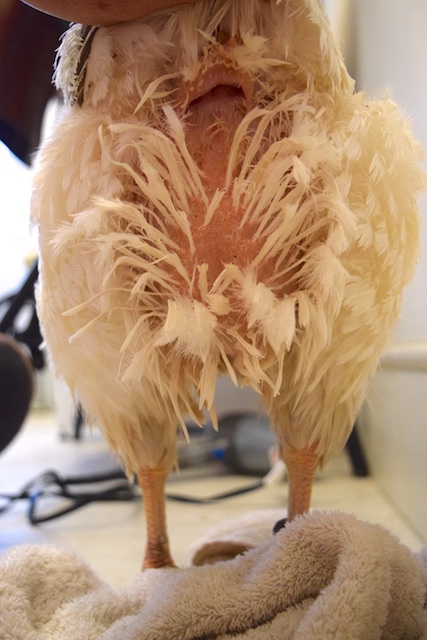
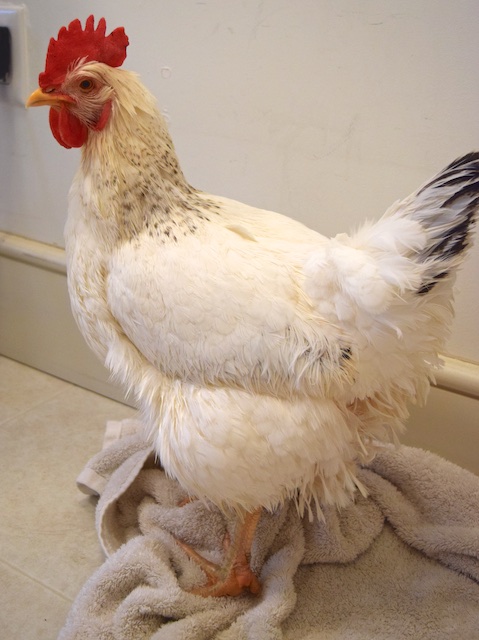
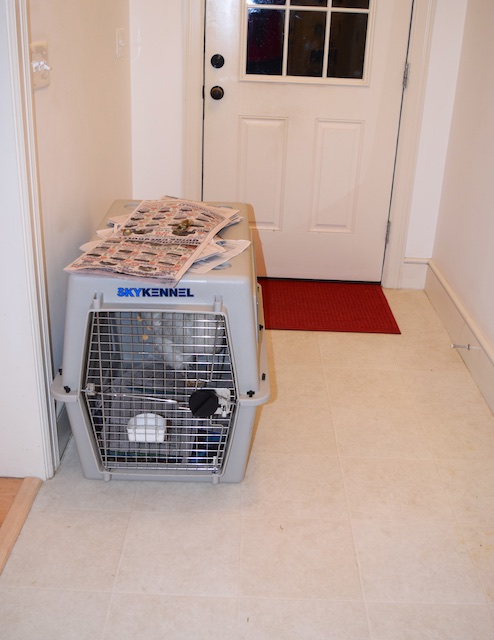
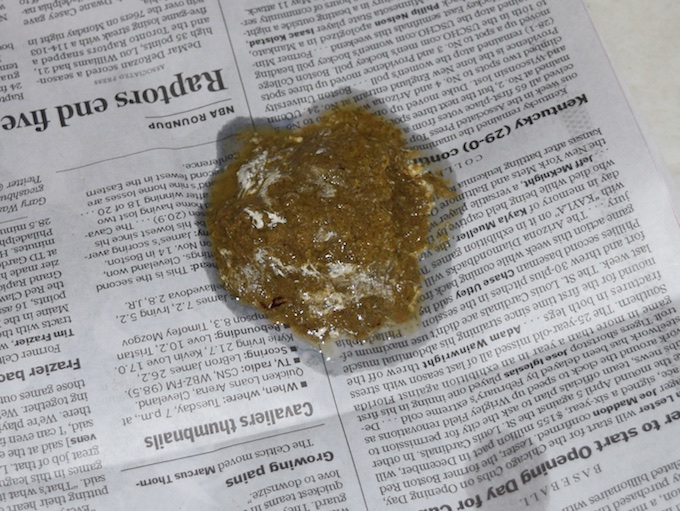
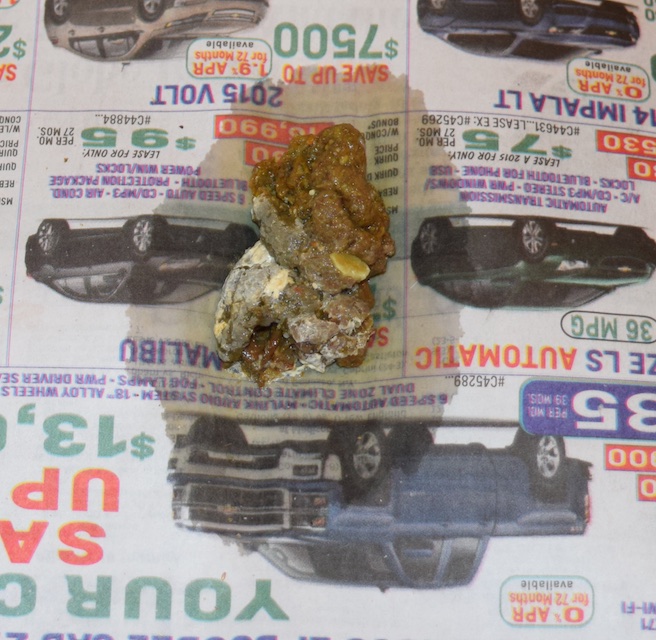



What a level of care and understanding you have for your chickens. This was a wonderful lessons. Knowing very little about chicken your posts are extremely informative. Thank you so much.
Very nice, clean chicken coop!! I’ve never really liked chickens, (like LEGO a lot more) but I do enjoy watching you’re Hen Cam! :)
Hi Terry, one of my r i red’s has always had dried mess on feathers, she never holds her tail up as much as other girls and when you watch her does not squat or bob when she poo’s. Her egg’s have always been torpedo shaped, she is laying, eating and drinking fine happily goes around with other girls dust bathing and roaming garden. Her poo is soft but, formed not runny and normal colour. Should i give her a spa bath and keep her bum clean, it is not red or wet and does not seem to bother her. Any suggestions ??
Glad to see sunshine and a bit of a thaw :)
She’s acting fine, she’s eating, drinking and laying. I’d leave her be. But, no harm on a nice warm sunny day, giving her a bit of a beauty day :)
Thanks, that was my thought to. She’s a lovely gentle hen. Do you think she could be slightly deformed on her rear end, she never holds her tail feathers up like the other girls and it might explain the funny shaped egg ??
I have a Glw that always has a messy bottom. Has since she was little . She doesn’t have a very pronounced upright tail like my other 2 wyandottes. She has tail feathers but they seem shorter or something. But she seems fine – lays a bit of a longish egg. But she does just fine. I limit the fruit she gets in the summer when I give the other girls fruit. It seems to help. I do have to bathe her butt about once a week in the summer. But other than that she seems normal. In the winter if freezes and I just keep it trimmed up. I often wondered if she vent gleet after reading your post on that. But there doesn’t seem much for me to do other than keep an eye on her.
As long as you’re bathing her, try the povidone iodine treatment that I describe in my post. I think that it will help.
There’s individuality and genetic differences between hens, and your hen is an example of that. She’s lucky to have landed under your care.
She is one lovely bird; I do hope that she makes it, but your attitude is admirable and entirely right. Another very informative post: thank you, Terry.
Was watching Opal yesterday she looks stunning and happy, hoping this continues for as long as poss. You never know what’s round the corner enjoy her now :)
Also I want a clean boot room like yours, with 6 grandkids, adults and a cat our room never looks tidy except when I first clean it and that’s a never ending job ( but I wouldn’t be without them ). Your weather is looking a bit warmer for a few days maybe a bit more of a thaw :)
The other side of the mudroom has a pile of boots :)
Server won’t let me watch web cams at moment will look in later, hope everything is okay :)
All working now. Lovely to see the boys and girls enjoying the sun, long may it last ! :)
Terry – love the article. I have a 16 wk old Orpington who fell and hurt her leg or ankle. No noticeable break but she limps around and does not stay on it for longer than a few steps. Poop seems normal as well. Still eating and drinking. We have given her epsom baths and sometimes 1/2 baby aspirin and its been over a month now and still no visible improvements. Is there anything else we can do? Thank you for the input and your articles are always wonderful.
For off topic questions like this, my readers should know that I’m happy to answer questions via email – I always need more info than is first given :) and there’s usually a bit of back and forth. That said, the quick answer is that I’ve had chickens with sprains and they recover, but since it’s been a month, something else is going on. Email me, and we’ll go over the clues. (I appreciate a “cup of coffee” in return for my time.)
Terry – Ok nevermind. I didn’t know each question on its own cost the “cup of coffee”. I already gave you a cup of coffee way back for no reason bc I thought it was to help you keep the blog going so if you want me to give you one for every question, I guess I will have to forget it.
Amy, some people do send me coffee, or carrots, or peanuts, “just because.” I appreciate it. The hosting fees for this site cost several thousand dollars a year, and that doesn’t cover the new cameras that I need to purchase. Writing my blog and helping people with their backyard chickens is my full-time job. I piece together a living doing public presentations, getting a bit of advertising revenue, my books, and yes, by answering questions. I prefer to answer questions privately not only to keep my blogs tightly on topic, but because it’s the only way to provide any help worth giving. That takes time, and often research, which I ask for a bit of compensation for. Some people don’t send “coffee” (usually $4 via PayPal), and I usually help them anyway. I think that what you’re looking for is a forum, which this is not.
Hey, nice birds you have there. I live in N.C. and have a few backyard birds. I have dealt with hens in the past that had cancer. This showed up in my hybrid sexlinks.
Right now I have some heritage breeds. They are young. Speckled Sussex, Welsumer, Wyandottes.
Not that i need to now, but tell me more about the Epson Salt Bath. how long, and how often in your situation with Opal? Thank you for your reply. Elizabeth Fornes, Vanceboro, NC
Follow the links in the post to the Spa Treatment FAQ. You’ll find the info that you need there.
I wish you had a book with all of your knowledge about chickens. I think I asked you about this once and you said something to the effect that there were already a lot of chicken books out there. Yes there is, some , a few are very good, but your information and photos make it all clearer, at least to me. I learn so much from you.
Nice of you to say so. Actually, I had a book proposal out on chicken keeping, which was rejected by all of the publishers. Self-publishing a traditional book doesn’t pay (in truth, neither does trade publishing!) Publishing is an odd business.
I am sure your chicken people would be very willing to send letters to publishers
They don’t know a good book when they see one. My daughter is ordering me ” The Farmstead Egg Guide & Cookbook ” of yours, can’t wait to see it :)
Terry just been reading some data on internal egg laying and eyp. Over here you can now get Hormone Implants ( Suprelorin ) which stop hens laying. Everyone who has used them say they work very well but are expensive. Seems over the top to me , but sometimes it’s difficult to let go. I would rather let my girl go peacefully, we have a very good avian vet who will put them to sleep with an injection, it is cheap and he allows me to hold them while he does it so they don’t stress. Have you heard of them and would you consider using them ??
I have heard about them. On many levels I think it the wrong way to go. I’ll leave it at that :)
Thanks Terry my feelings are the same :)
Good morning all. You must have a thaw your snow mounds are getting smaller thank goodness, just don’t want it to thaw all at once, mud, mud, mud ! :)